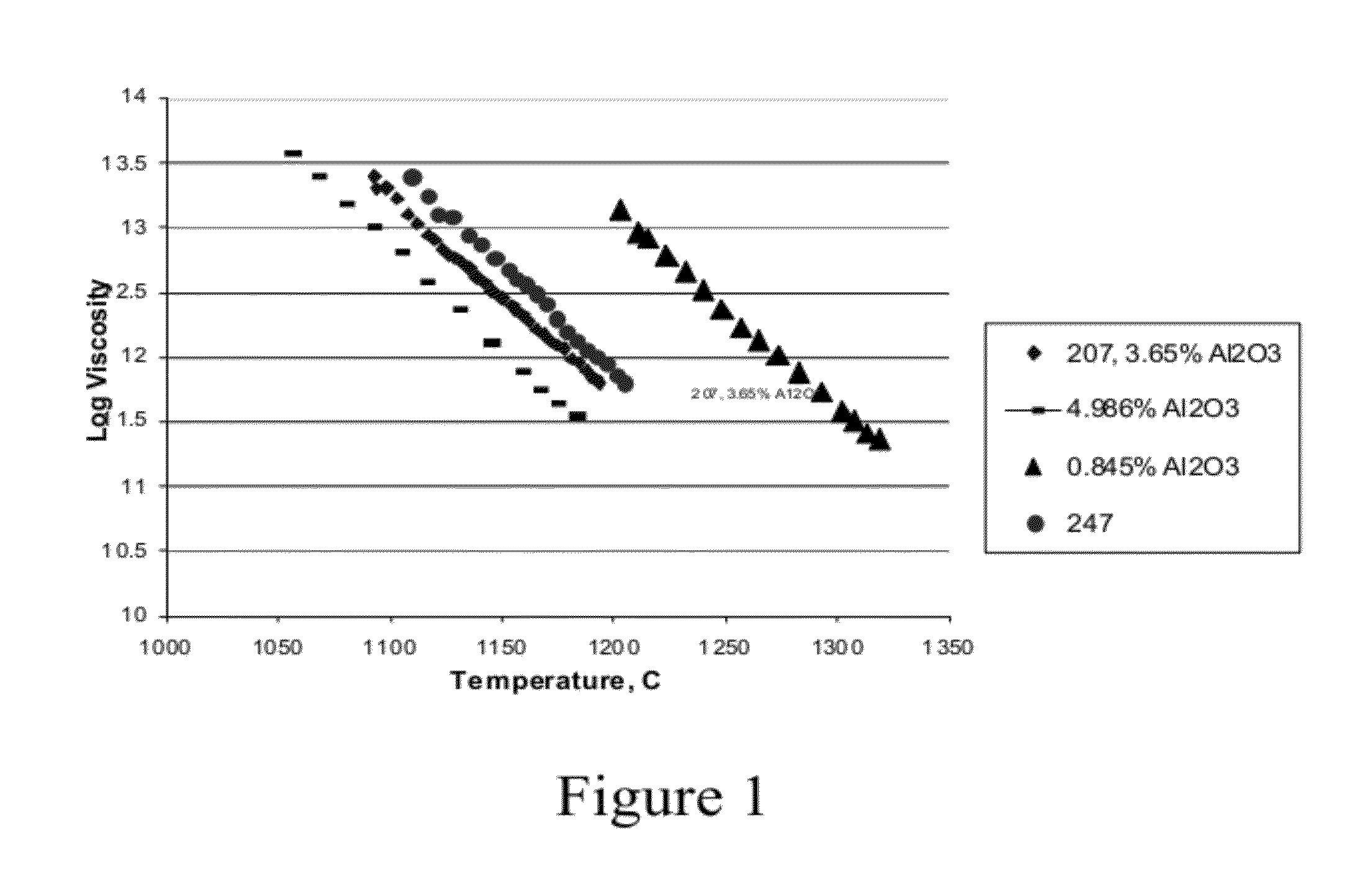Fused quartz tubing for pharmaceutical packaging
a technology of pharmaceutical packaging and quartz tubing, which is applied in the direction of pharmaceutical containers, packaging foodstuffs, packaged goods types, etc., can solve the problems of poor chemical durability of these glasses, poor purity and/or effectiveness of such protein-based drugs, and the efficacy and purity of these drugs, so as to reduce the viscosity of glass at a particular temperature, the working point temperature and the viscosity of glass can be reduced, and the effect of low softening
- Summary
- Abstract
- Description
- Claims
- Application Information
AI Technical Summary
Benefits of technology
Problems solved by technology
Method used
Image
Examples
examples
[0021]Various samples of doped fused quartz glass were produced and their respective viscosity versus temperature performance was recorded. The examples were fused according to the previously described procedure, and the viscosity (in poise) was measured as a function of temperature. The results are set forth in FIG. 1, which shows the log viscosity versus temperature. From this data, the softening temperature (temperature at which the glass has a viscosity of 107.6 poise) of each sample was calculated. The results are set forth below in Table 1.
TABLE 1SofteningSample IDCompositionsTemperatureLSPG 1SiO2 doped with 0.845 wt. % Al2O31558° C.LSPG 2SiO2 doped with 1.685 wt. % Al2O31535° C.LSPG 3 (ID 207)SiO2 doped with 3.65 wt. % Al2O31470° C.LSPG 4SiO2 doped with 4.986 wt. % Al2O31419° C.LSPG 5 (ID 247SiO2 doped with 3.2 wt. % Al2O3,1454° C.on chart)0.18 wt. % CeO2, 0.03 wt. % TiO2
[0022]As can be seen, all of these samples exhibited a softening temperature that was dependent upon the d...
PUM
| Property | Measurement | Unit |
|---|---|---|
| working point temperature | aaaaa | aaaaa |
| wt. % | aaaaa | aaaaa |
| wt. % | aaaaa | aaaaa |
Abstract
Description
Claims
Application Information
 Login to View More
Login to View More - R&D
- Intellectual Property
- Life Sciences
- Materials
- Tech Scout
- Unparalleled Data Quality
- Higher Quality Content
- 60% Fewer Hallucinations
Browse by: Latest US Patents, China's latest patents, Technical Efficacy Thesaurus, Application Domain, Technology Topic, Popular Technical Reports.
© 2025 PatSnap. All rights reserved.Legal|Privacy policy|Modern Slavery Act Transparency Statement|Sitemap|About US| Contact US: help@patsnap.com

